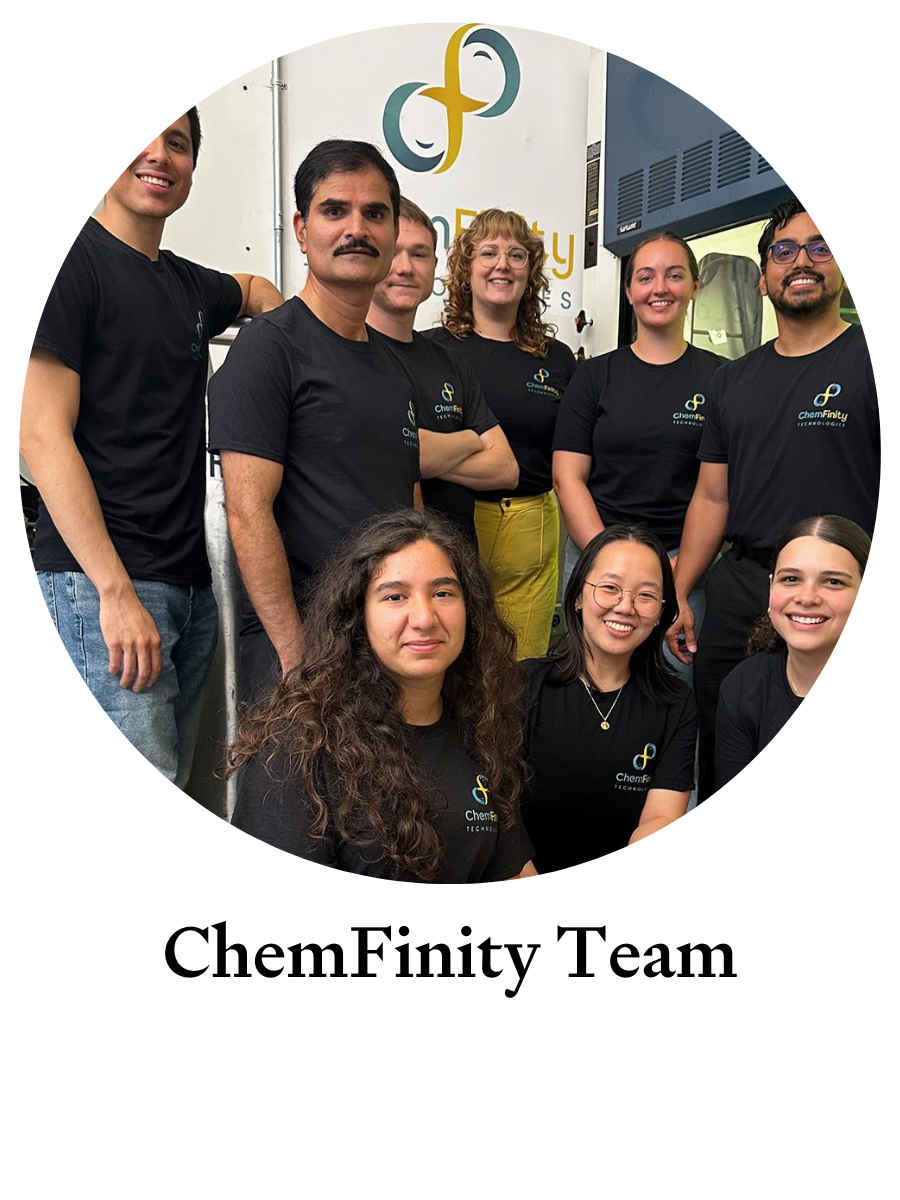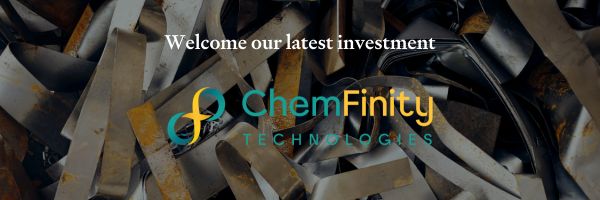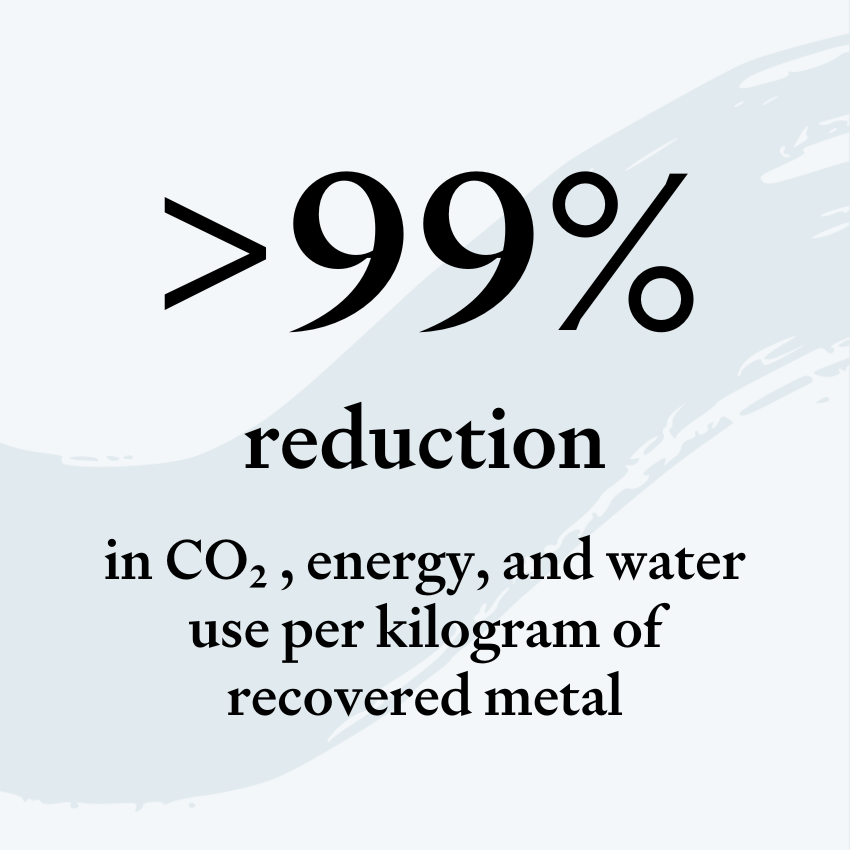Metals form the backbone of modern industry. They carry power, store energy, and anchor the technologies driving the transition to a low-carbon economy. But despite surging demand, the systems built to supply these critical materials are breaking down.
Mining projects take decades to permit and build. Ore grades are falling, costs are rising, and geopolitical risks continue to mount. Refining remains energy-intensive, centralized overseas, unable to economically process much of the low-grade feedstock piling up around the world. The result is a widening supply gap that threatens to stall the energy transition, and over $60 billion in recoverable metal value stranded in waste streams every year.
Chemfinity closes this gap. Its engineered polymer sorbents recover high-purity metals from complex waste streams, in hours, not weeks, and at a fraction of the cost and footprint of conventional refining. By transforming stranded waste into high-spec feedstock, Chemfinity makes critical minerals faster, cleaner, and cheaper to obtain – unlocking true circularity for global metals supply chains.
Recovering metals from waste streams is notoriously hard. Platinum, palladium, silver, and other valuable elements often exist at trace concentrations in catalytic converter dust, e-waste, and spent solar panels. Today, recovering them requires harsh thermal and chemical processes, multi-step separations, and months-long shipments to overseas refineries – losing yield, time, and money at every turn.
ChemFinity takes a fundamentally different approach. Its porous polymer networks (PPN), or sorbents, act like molecular sponges, rapidly and selectively capturing target metals even in highly-acidic, mixed contaminant conditions that would render conventional resins ineffectual. Once bound, metals are stripped to high-purity, and sorbents are regenerated on-site for repeated use. Modular and compact, ChemFinity’s columns can be deployed directly at recycling facilities or integrated into refineries, eliminating the need for long-distance logistics.
For the first time, high yield, high purity metal recovery can happen locally, quickly, and profitably, without the footprint or complexity of traditional refining. This isn’t incremental optimization. It’s a re-defining of the physics of metal recovery: Faster kinetics, cleaner separations, and drop-in deployment where metals are lost today.
For recyclers, refining has long been a trade-off between cost, yield, and time. Today’s infrastructure is expensive, inefficient, and slow to payout. Incumbent smelters routinely charge double-digit toll fees, losing up to 30% of contained metal value, and take months to return payment. Lower-grade feedstocks are often landfilled entirely, leaving billions of dollars of value untapped.
Chemfinity breaks this paradigm. Its sorbent columns capture target metal and produce high-purity eluates ready for final recovery in hours, not weeks. Modeled all-in costs for platinum group metals, Chemfinity’s beachhead market, are 2-3X lower than existing thermal and hydrometallurgical processes.
For customers, this translates to shorter cash cycles, higher retained value, and profitable processing of feedstocks once destined for landfill, turning refining from a slow, centralized bottleneck into a fast, high-return part of the metals supply chain.
The metals industry is one of the most resource- and carbon-intensive parts of the global economy. Producing a single kilogram of platinum group metals (PGMs) through mining and conventional refining emits nearly 29 tons of CO₂, burns ~100,000 kWh of energy, and consumes ~25,000 liters of water. These impacts are baked into legacy processes designed for scale, not efficiency or circularity.
Chemfinity’s ambient-temperature, closed-loop process eliminates the high-heat, low-selectivity steps that drive refining’s footprint. For PGMs, the result is a >99% reduction in CO₂ emissions, water use, and energy consumption per kilogram of recovered metal.
Deployed across catalytic converters and e-waste refining alone, ChemFinity could avoid ~35 million tons of CO₂ annually, scaling to over ~295 million tons and 80 billion litres in annual freshwater savings as it expands to other waste streams—all while strengthening access to the critical metals underpinning decarbonization.
ChemFinity has already demonstrated its platform on real-world catalytic converter leachates with multiple recycling partners. In achieving exceptionally high recovery and purity levels, under industrially relevant conditions, they have proven their ability to unlock metal value that existing refiners routinely leave behind.
The company is now preparing to scale. Proceeds from the $7M Seed round will fund pilot-ready systems, scale sorbent production, and launch early partnerships with North American recyclers. Beyond PGMs, ChemFinity’s sorbent architecture has shown efficacy across 20+ additional metal targets, unlocking pathways into silver recovery and copper processing. ChemFinity’s platform sorbent technology stands to reshape how critical minerals are sourced, recovered, and circulated globally.
ChemFinity was founded by Dr. Adam Uliana and Dr. Ever Velasquez, UC Berkeley-trained chemical engineers with deep expertise in advanced separations, polymer chemistry, and process design. Both founders spent the last decade pioneering high-performance materials for selective metal capture, combining academic rigor with a practical focus on manufacturability and deployment in heavy industry. The nine-person team is also supported by Prof. Jeffrey Long, a leading authority in porous materials and separations chemistry, and industry fellows from Breakthrough Energy.



"The strongest technologies change the physics of an industry—delivering equal or greater outcomes by using less matter, energy, space, or time. ChemFinity’s engineered sorbents do exactly that for metals refining. Their exceptional selectivity and fast reaction kinetics capture and separate critical metals orders of magnitude faster than conventional methods, achieving market-grade purity with minimal energy and water use. This combination of speed, selectivity, and versatility can unlock new value streams across multiple energy transition metals. It's a true step-change in metal circularity."
— Helen Lin, Partner, At One Ventures


